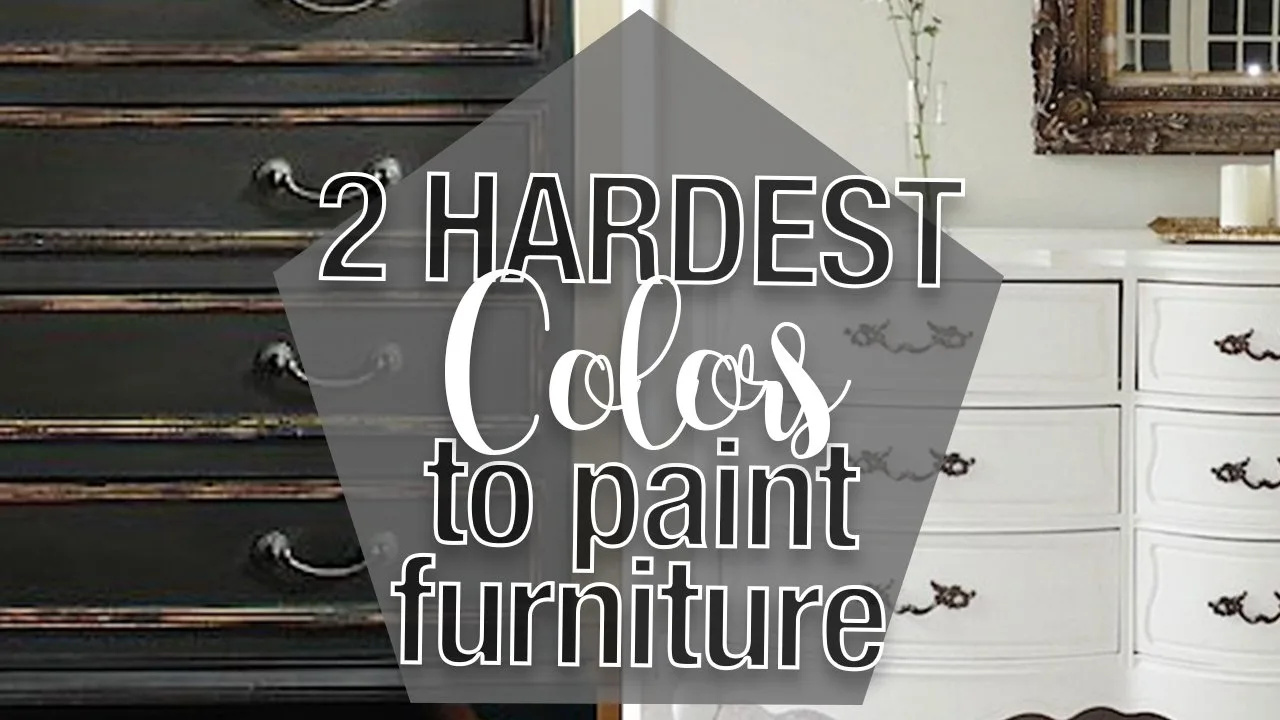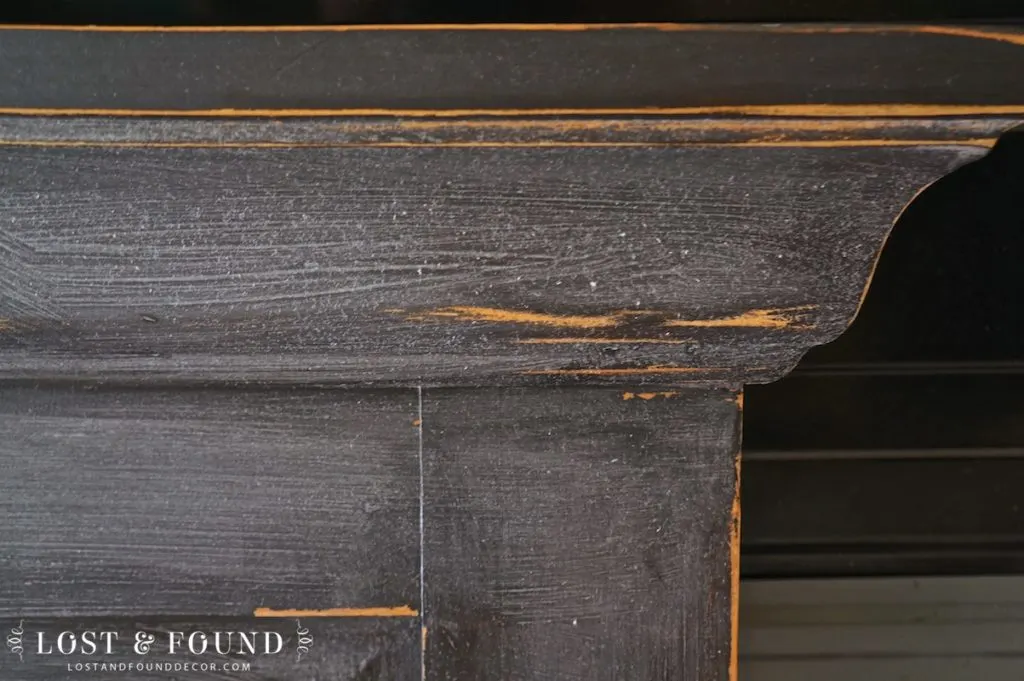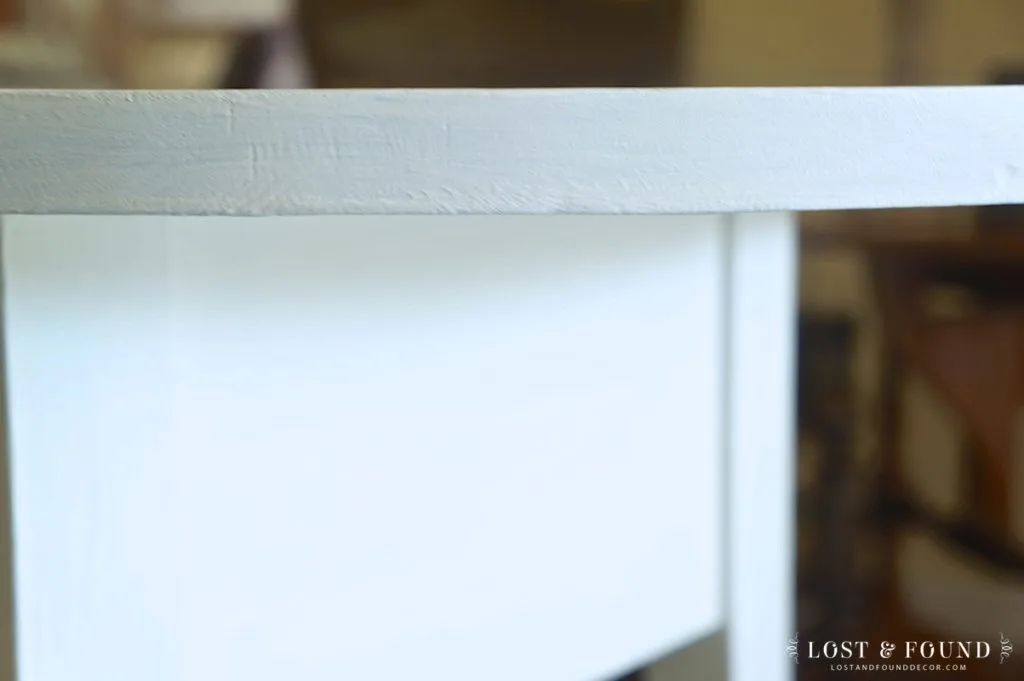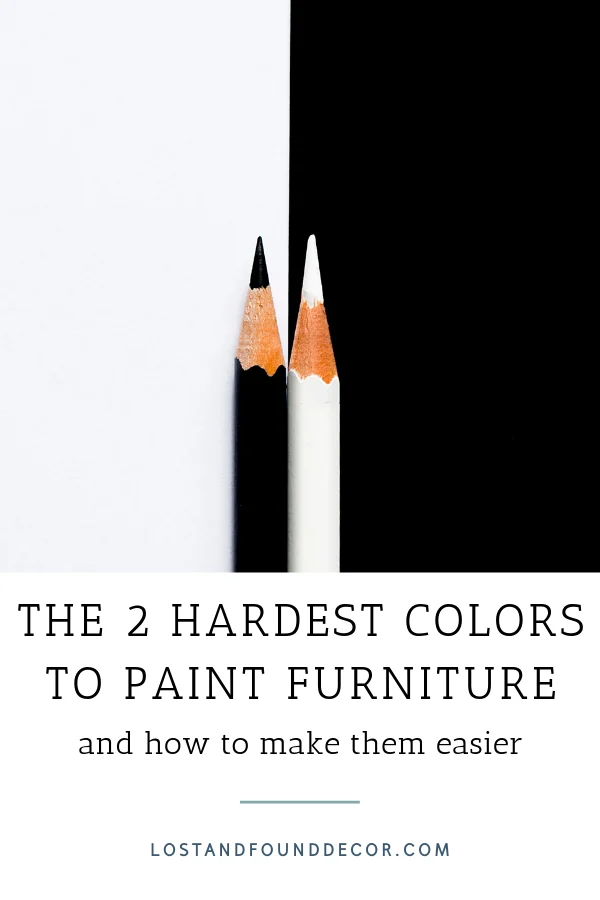I love when I get the chance to talk with a paint customer, either in person or over email, who wants to paint a piece of furniture for the first time. I really do think that anyone, with a little help and practice, can learn how to do this. (do you know about Fusion Mineral Paint?)
What’s hard though is when I hear that same customer say they want to paint their first project black, or when they say they want to paint their first project white.
And for some reason, those are almost always the two colors that people want to try out first when they start painting furniture. It’s probably because they seem basic and the easiest thing to start with.
Well, let me burst that bubble a little bit . . . Black and White are actually the two hardest colors to paint furniture, or really anything else for that matter. Unfortunately, they are not great colors for a new painter to start with.
Let me explain…

It all has to do with light, and pigment, and all of this technical stuff, but trust me, it’s true!
Perfect finishes in straight black and pure, bright white are challenging to achieve, so I always try to recommend different colors for a beginning painter.
The Problem with Black
Black is actually rather easy to paint on, but the problems begin after the paint has dried.
Much like a great black dress covers up any “flaws” in your figure, a black paint job will do a good job at covering up scratches, chips, and other minor flaws in a piece of furniture.
But if you live with pets, think about that same black dress and what happens when you sit on your couch or walk through the living room . . .What do you find all over your dress?
Yep, that same black dress that hides your flaws also shows every bit of pet hair, dust, dirt, lint, etc. Furniture painted black is no different.

Think about your house. Which pieces of furniture always seem to have the most dust?
Are they the dark pieces or the light pieces? Right–the dark ones! All of the same dust and dirt hangs out on the light furniture as well, it just doesn’t contrast as much with the light finish so it doesn’t stand out like it does on a black piece.
Black furniture will always show the most amount of dust, dirt, and fingerprints.
So how do you fix it? Well, the more flat the finish of the black, the worse the problem.
To decrease the amount of dust and dirt that the finish shows, increase the glossiness of your black. You can do that by using a high gloss black paint, or adding a glossy topcoat to your more matte black paint. You will still see more dust and dirt than you see on lighter pieces, but the gloss will help mask some of what shows.
The Problem with White
The problem with white is reversed–it hides more dirt and dust once it’s dried, but the process of painting it is a beast.
And let me make clear that I am talking about pure white, not cream or an off-white. The more pure and bright your white is, the harder it is to work with.

I have learned a lot about how paint is formulated over the past few months, so let me try and explain the issue with bright white in layman’s terms.
To make the brightness of a pure white paint, typically yellow pigment is used in the mix.
The yellow pigment actually has a way reflecting light off of the painted surface which results in the finish looking more transparent than it actually is–kind of an optical illusion.
Also, most bright white paint mixes don’t have a lot of “oxides” in their mix, and “oxides” help make the paint more opaque and less clear.
So what does that mean? If you plan to paint a piece of furniture bright white, be prepared to use 3 or 4 coats of paint, and even then, you still may think you see the underneath surface showing through (remember that optical illusion I mentioned above?)
Several customers that I have spoken with have had this issue with the brightest white colors of Fusion’s line–Casement and Picket Fence.
In my experience, it’s not so much an issue with any specific type or brand of paint, but just with bright white in general. I have used a specialty Benjamin Moore, very high-grade bright white paint on my kitchen cabinets, and that paint also took 3 coats on top of a coat of white primer to fully cover my honey oak cabinets.
So what’s the solution for bright white?
Well, for one, you need to be prepared to paint more coats than you usually would with a cream, gray, blue, or other more pigmented colors. Also, a base coat of an opaque, matte primer (like Kilz) or a basecoat of a gray color (like Sterlings in Fusion’s line) can help you get more full coverage.
If you want a bright white finish though, patience is my best advice 🙂
So if you are a new furniture painter, why not try a more simple color, like gray, blue, green, or even cream? All of those colors paint so much easier–they cover better than white and don’t show off dirt and dust like black.
You may think you are helping yourself out by picking a basic color like black or white to start off with, but you may be actually setting yourself up for frustration. And once you have practiced your technique and are more comfortable with painting, then tackle the black and white 🙂
Pin This Helpful Resource!


Linking up to: No Rules Weekend Party, Silver Pennies Sundays

Modern Chest of Drawers Furniture Makeover | Lost & Found
Thursday 24th of March 2016
[…] 3 coats because it is a pure, bright white (you can read more about issues painting bright white here). I knew I wanted a bright, clean finish though to contrast with the darker drawers, so it was […]
chris aka monkey
Friday 14th of August 2015
boy you are so right about the dust collecting since i painted my desk top yellow and left the bottom black, i don't notice the dust bunnies until they start hopping around, and i painted my dresser drawers white and i didn't think i was ever going to get the wood covered xx